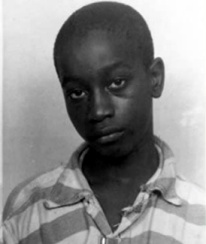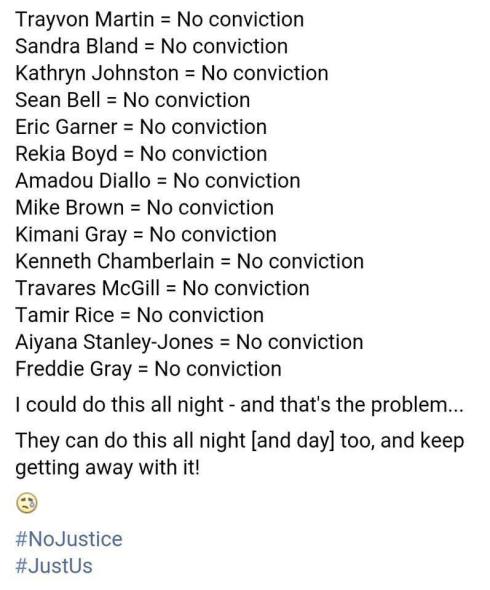 The history of America and the injustice inflicted upon black people is atrocious, particularly for black children. Yet, they continue to claim some sort of moral standard and yes they claim justice in the name of God. We have witnessed Trayvon Martin, Tamir Rice in modern times and no one can forget little Emmitt Till. For the record, these are just a few of the killings we know about but we must not forget George Stinney who was convicted at a flawed trial for murder in 1944 in his home town of Alcolu, South Caroline.
The history of America and the injustice inflicted upon black people is atrocious, particularly for black children. Yet, they continue to claim some sort of moral standard and yes they claim justice in the name of God. We have witnessed Trayvon Martin, Tamir Rice in modern times and no one can forget little Emmitt Till. For the record, these are just a few of the killings we know about but we must not forget George Stinney who was convicted at a flawed trial for murder in 1944 in his home town of Alcolu, South Caroline.
Let us never forget the plight of George Stinney! George Stinney was a 14-year-old Black teenager who was put to death for the murders of two White girls nearly seventy years ago. Why is he significant? Stinney was the youngest person executed in the United States last century that we know of, but there is no official record of the day-long trial in which the boy’s fate was decided in a mere ten minutes after the defense and prosecution rested their cases.
It is widely believed Stinney did not commit the murders but instead used as a scape-goat for a town blindly seeking revenge for the two white girls. These kinds of Atrocities were often imposed upon blacks and sanctioned under the cover of law. nonetheless, the boy’s family tied to prove that Stinney’s conviction was tried under the most egregious of circumstances and that a new trial is in order. After all this is South Carolina!
Observers say; their efforts to reopen the case is a long shot at best, according to news reports. Solicitor Ernest “Chip” Finney III, the prosecutor said, “There’s not going to be enough evidence to open it up.” They did, however, grant a pardon for the child some seventy years after they killed him.
Here is some background on the case reported by Newsone:
When two White girls, 11-year-old Betty June Binnicker and 8-year-old Mary Emma Thames, went missing in Alcolu, S.C., on March 22, 1944, after riding into town on their bicycles, Stinney was arrested the following day for allegedly murdering them.
The girls had allegedly passed Stinney’s home, where they asked him where they could find a particular kind of flower. Once the girls did not return home, hundreds of volunteers looked for them until their bodies were found the next morning in a ditch.
Because Stinney joined the search team and shared with another volunteer that he had spoken to the girls before they disappeared, he was arrested for their murders.
Without his parents, Stinney was interrogated by several White officers for hours. A deputy eventually emerged announcing that Stinney had confessed to the girls’ murders. The young boy allegedly told the deputies that he wanted to have sex with the 11-year-old girl, but had to kill the younger one to do it. When the 8-year-old supposedly refused to leave, he allegedly killed both of them because they refused his sexual advances.
To coerce his confession, deputies reportedly offered the child an ice cream cone.
There is no record of a confession. No physical evidence that he committed the crime exists. His trial — if you want to call it that — lasted less than two hours. No witnesses were called. No defense evidence was presented. And the all-White jury deliberated for all of 10 minutes before sentencing him to death.
On June 16, 1944, his frail, 5-foot-1, 95-pound body was strapped into an electric chair at a state correctional facility in Columbia, S.C. Dictionaries had to be stacked on the seat of the chair so that he could properly sit in the seat. But even that didn’t help. When the first jolts of electricity hit him, the head mask reportedly slipped off, revealing the agony on his face and the tears streaming down his cheeks. Only after several more jolts of electricity did the boy die.
While no surviving participants from the trial are around to testify, people who claim to have known Stinney are. In a recent interview with the Post and Courier, friends of the slain girls said that they are convinced that Stinney was guilty:
Sadie Duke said she always believed Stinney was guilty because only a day before, he had threatened her and her friend Violet Freeman as they went to a church to collect water.
“He said, ‘If you don’t get away from here and if you ever come back, I will kill you,’” Duke said.
Evelyn Roberson, who was 15 at the time of the crime, said her husband often fought with Stinney as they tended cows near the town. “They called the (Stinney) boy ‘Bully’ because he was so bad to everybody,” she said. “Everybody he met he wanted to fight.”
Roberson said Stinney first confessed to the crime to his grandmother, who called the authorities. “I don’t feel like it’s an open case,” she said. “I think he did it, and he should have gotten punished for it and he did.”
Bob Ridgeway of Manning said he was 13 at the time and remembers his father joining the search party for the girls, and the mill whistle blowing for a long time, signaling that their bodies were found, and the search was over. “There was never any question in anybody’s mind to my knowledge that he did it,” he said.
There is no dispute regarding the injustice inflicted on black people, then or now. When there was no Internet or available access to information atrocities happened out of view and without regard to morals. Remember, Jim Crow was the law of the land! Therefore, it was easy for those in power to do the most despicable acts and get away with it, as the police do today! And that’s my thought provoking perspective…
Remember this!









January 22nd, 2014 at 1:35 pm
In what way is the U.S. better than most countries on the planet?
LikeLiked by 1 person